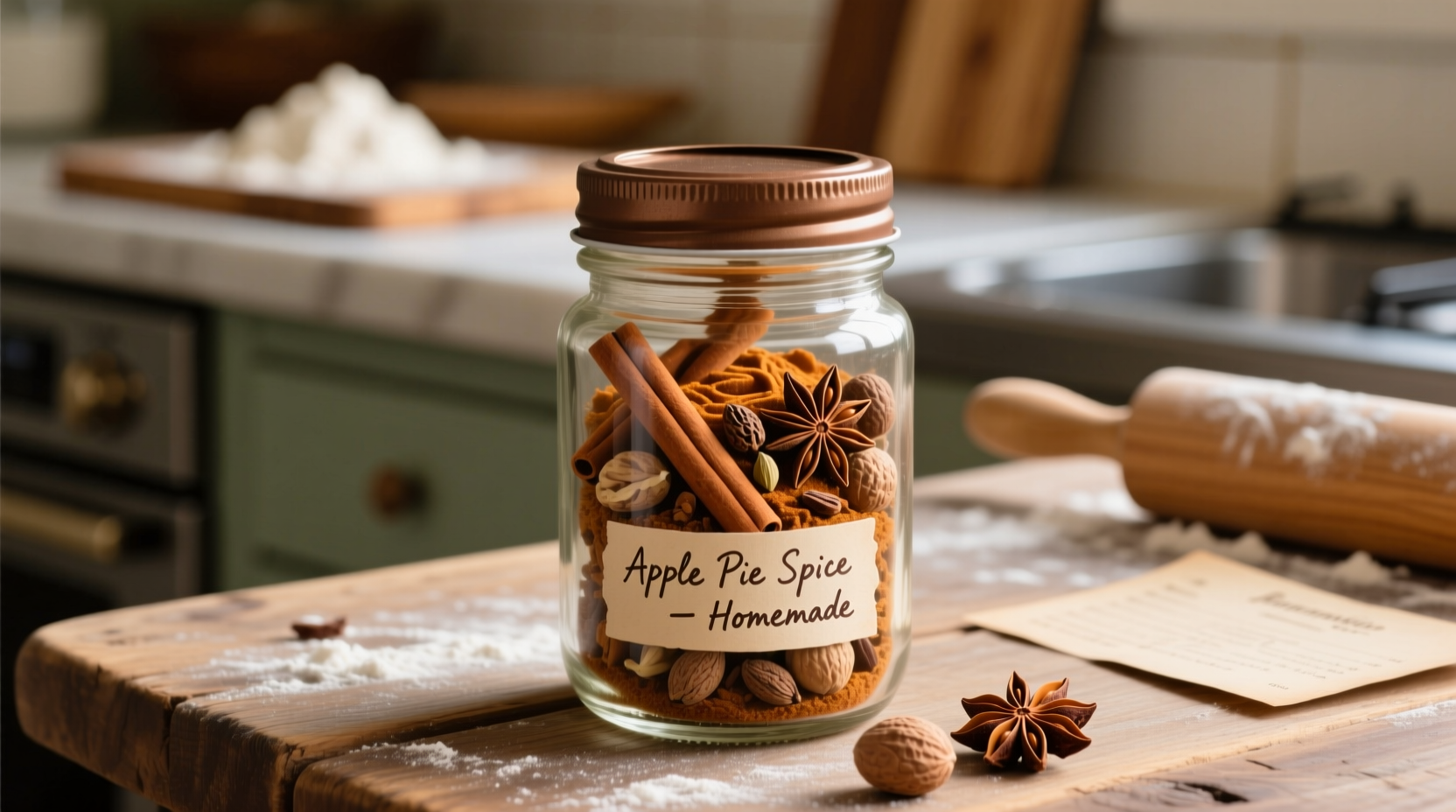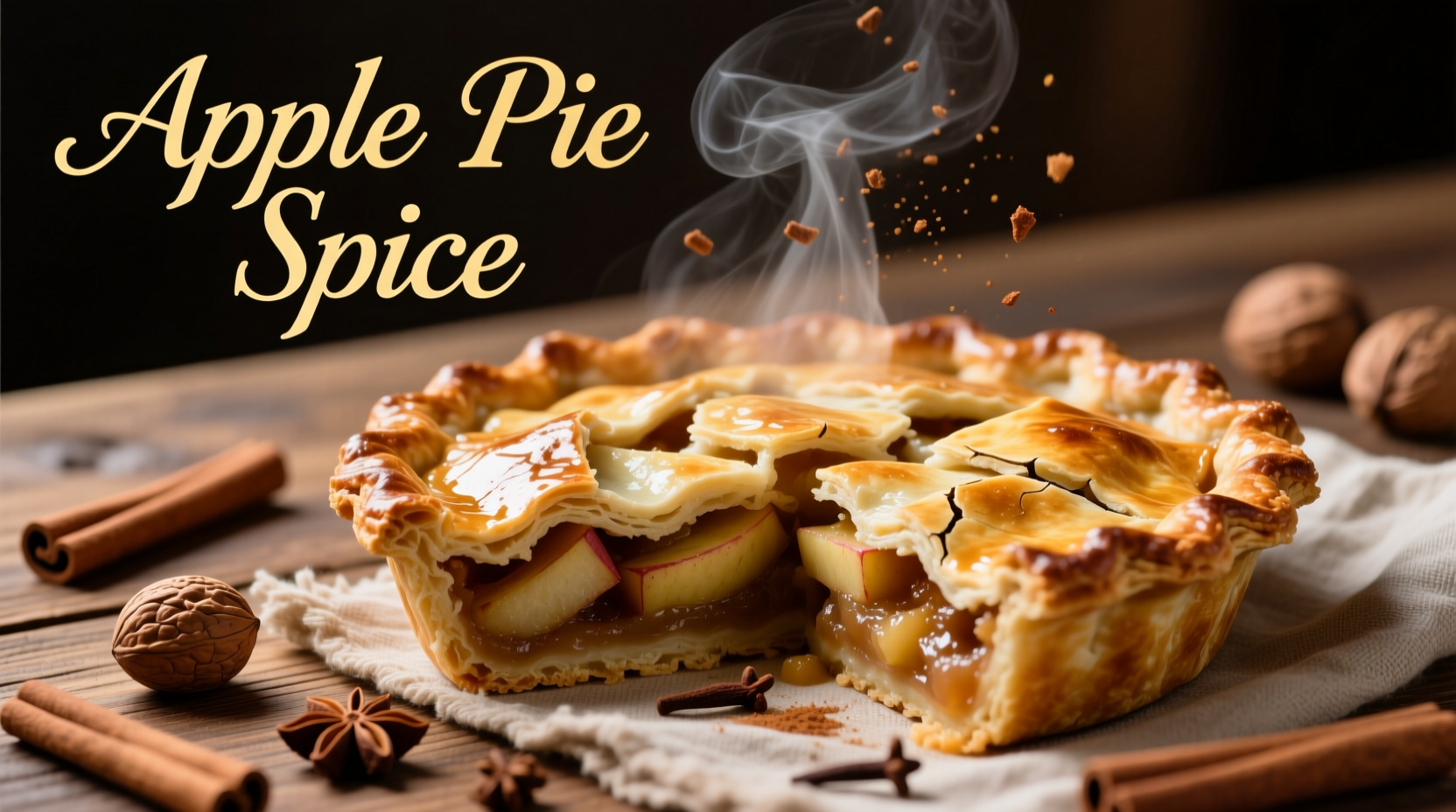Understanding the Essential Spice Blend for Perfect Apple Desserts
When you search what is apple pie spice, you're likely looking for more than just a definition—you want to understand how this blend transforms ordinary apple desserts into extraordinary creations. As a French-trained chef specializing in European spice traditions, I've spent years studying how these carefully balanced combinations work their magic on specific ingredients.
The Core Components That Define Apple Pie Spice
Apple pie spice isn't a single ingredient but a harmonious blend designed specifically to complement apples' natural sweetness and tartness. Understanding each component helps you appreciate why this blend works so well:
- Cinnamon (70-80% of blend): Provides the warm, sweet base note that forms the foundation of the blend. Ceylon cinnamon offers a more delicate flavor than Cassia, which many professional bakers prefer for apple applications.
- Nutmeg (10-15%): Adds depth and subtle nuttiness that enhances apples' natural complexity without overpowering them.
- Allspice (10-15%): Despite its name, allspice is a single berry that naturally contains flavors reminiscent of cinnamon, nutmeg, and cloves—making it the perfect unifying element.
- Ginger (optional, 0-5%): Adds a gentle warmth without the sharp heat of cloves, which distinguishes it from pumpkin pie spice.
According to research from the US Department of Agriculture's Food Data Central, the specific chemical compounds in these spices—particularly cinnamaldehyde in cinnamon and myristicin in nutmeg—interact with apple's malic acid to create flavor compounds our palates perceive as "perfectly balanced."
Apple Pie Spice vs. Pumpkin Pie Spice: Critical Differences
Many home bakers confuse these two blends, but understanding their distinctions is crucial for recipe success. This comparison reveals why substituting one for the other can dramatically alter your final product:
| Spice Blend | Primary Ingredients | Typical Ratio | Best Used For |
|---|---|---|---|
| Apple Pie Spice | Cinnamon, Nutmeg, Allspice | 4:1:1 | Apple desserts, fruit crisps, oatmeal |
| Pumpkin Pie Spice | Cinnamon, Ginger, Nutmeg, Allspice, Cloves | 4:2:1:1:1 | Pumpkin recipes, winter squash, chai |
The key difference lies in ginger and clove content—pumpkin pie spice contains significantly more ginger and always includes cloves, creating a sharper, more complex profile better suited to earthy winter squash than delicate apples.
Creating Your Own Superior Apple Pie Spice Blend
Commercial blends often contain fillers or inconsistent ratios. Making your own ensures freshness and control over flavor intensity. Here's the professional method I recommend:
Basic Homemade Apple Pie Spice Recipe
This foolproof ratio creates a balanced blend that enhances rather than overwhelms:
- 4 tablespoons ground cinnamon (Ceylon preferred)
- 1 tablespoon freshly grated nutmeg
- 1 tablespoon ground allspice
Mix thoroughly in a small bowl, then store in an airtight container away from light and heat. For optimal flavor, use within 3 months—spices lose potency over time as confirmed by Oregon State University's Food Safety Program.
Advanced Customization Tips
Professional bakers adjust their blends based on apple variety:
- Tart apples (Granny Smith): Add 1/4 teaspoon cardamom to balance acidity
- Sweet apples (Honeycrisp): Reduce cinnamon to 3 tablespoons and increase allspice to 1.5 tablespoons
- For deeper complexity: Toast whole spices before grinding (350°F for 5 minutes)

Practical Applications Beyond Apple Pie
Understanding what is apple pie spice opens doors to creative applications far beyond traditional pie. Here's how to maximize your blend:
Daily Breakfast Enhancements
- Stir 1/4 teaspoon into your morning oatmeal or yogurt
- Add to pancake or waffle batter (1 teaspoon per cup of flour)
- Infuse your coffee with a pinch before brewing
Unexpected Savory Applications
Contrary to popular belief, apple pie spice works beautifully in savory contexts when used judiciously:
- Rub for pork chops (combine with salt and pepper)
- Add to sweet potato or butternut squash soup
- Enhance roasted root vegetables (carrots, parsnips)
Troubleshooting Common Apple Pie Spice Issues
Even experienced bakers encounter challenges with spice blends. Here's how to solve the most frequent problems:
"My blend tastes too harsh"
This usually indicates stale spices or improper ratios. Always check expiration dates—ground spices typically remain potent for 6-12 months. For immediate improvement, add 1/8 teaspoon of orange zest to your recipe to mellow sharp notes.
"The spice flavor disappears during baking"
Heat degrades spice compounds. Add half your spice blend to the filling and the other half to the topping for layered flavor that lasts through baking. This technique, documented in American Chemical Society food chemistry studies, preserves volatile flavor compounds.
"I ran out of apple pie spice—what's a good substitute?"
Create an emergency blend using 1 teaspoon cinnamon + 1/4 teaspoon nutmeg + 1/4 teaspoon allspice. Avoid pumpkin pie spice as a substitute—it contains cloves and extra ginger that clash with apple's delicate flavor profile.
When Apple Pie Spice Isn't the Right Choice
Understanding the limitations of apple pie spice is as important as knowing its uses. This blend works best with:
- Fresh apple desserts where you want to enhance natural flavor
- Recipes where spice should complement rather than dominate
- Breakfast applications needing subtle warmth
Avoid using apple pie spice when:
- Creating intensely spiced winter desserts (use pumpkin pie spice instead)
- Working with very tart fruits like rhubarb (requires more ginger)
- Developing complex savory spice rubs (needs additional components)
Preserving Flavor: Storage and Freshness Guidelines
Proper storage dramatically affects your spice blend's effectiveness. Based on research from the USDA National Institute of Food and Agriculture, follow these guidelines:
- Store in airtight glass containers (not plastic, which absorbs oils)
- Keep away from heat sources (never above the stove)
- Label with creation date and use within 3 months for peak flavor
- Freeze for long-term storage (up to 1 year) in vacuum-sealed bags
Test freshness by rubbing a small amount between your fingers—if the aroma is weak or musty, it's time to make a new batch.
Final Thoughts on Mastering Apple Pie Spice
Understanding what is apple pie spice goes beyond memorizing ingredients—it's about recognizing how these specific spices interact with apples to create something greater than the sum of their parts. By making your own blend and understanding its proper applications, you gain control over one of baking's most transformative elements. Remember that the best spice blends aren't fixed formulas but living recipes that adapt to your ingredients, equipment, and personal taste preferences.











 浙公网安备
33010002000092号
浙公网安备
33010002000092号 浙B2-20120091-4
浙B2-20120091-4